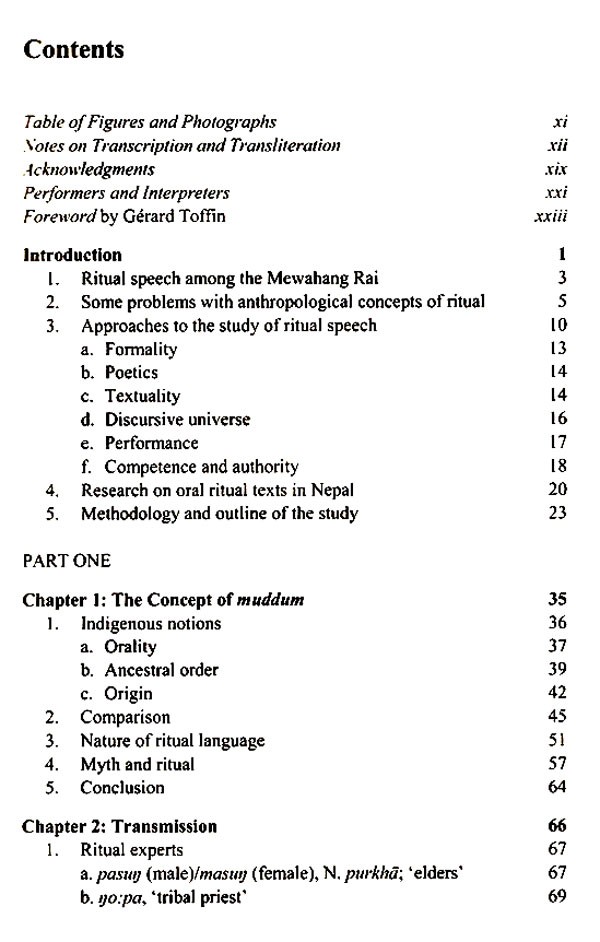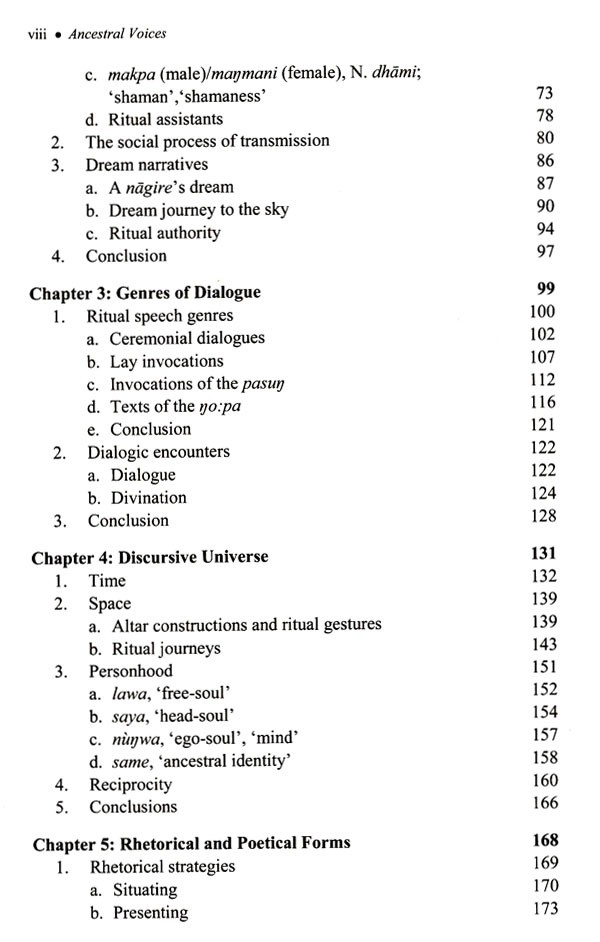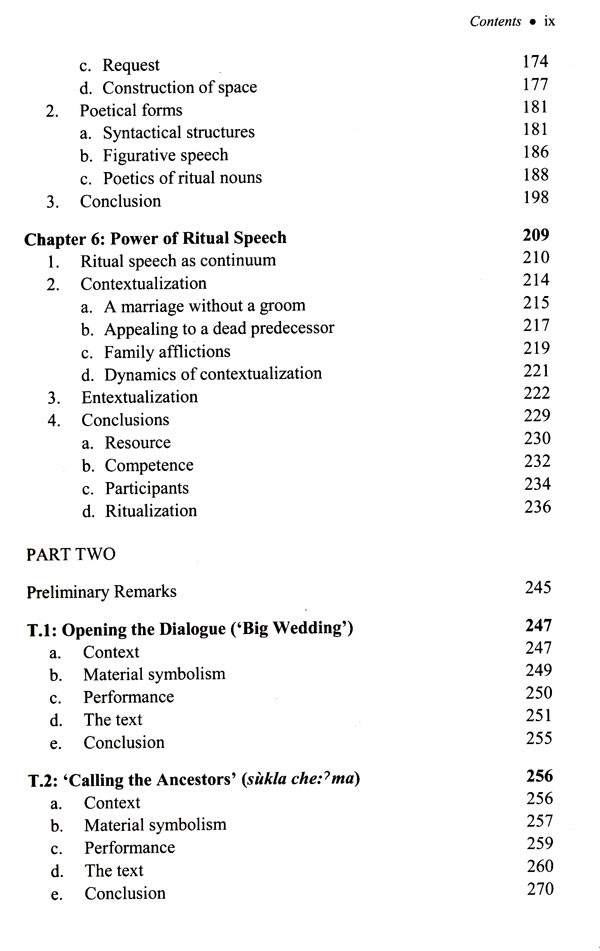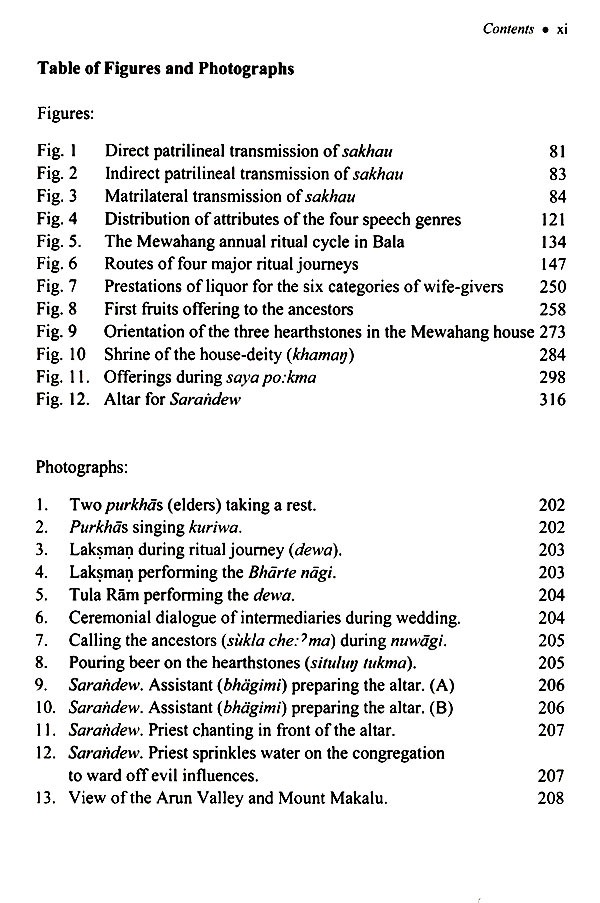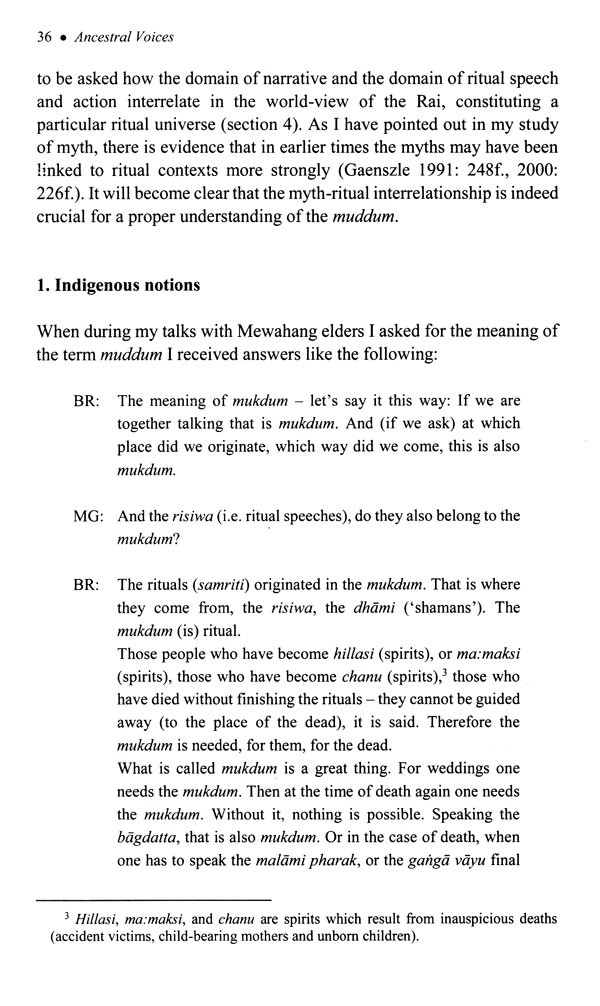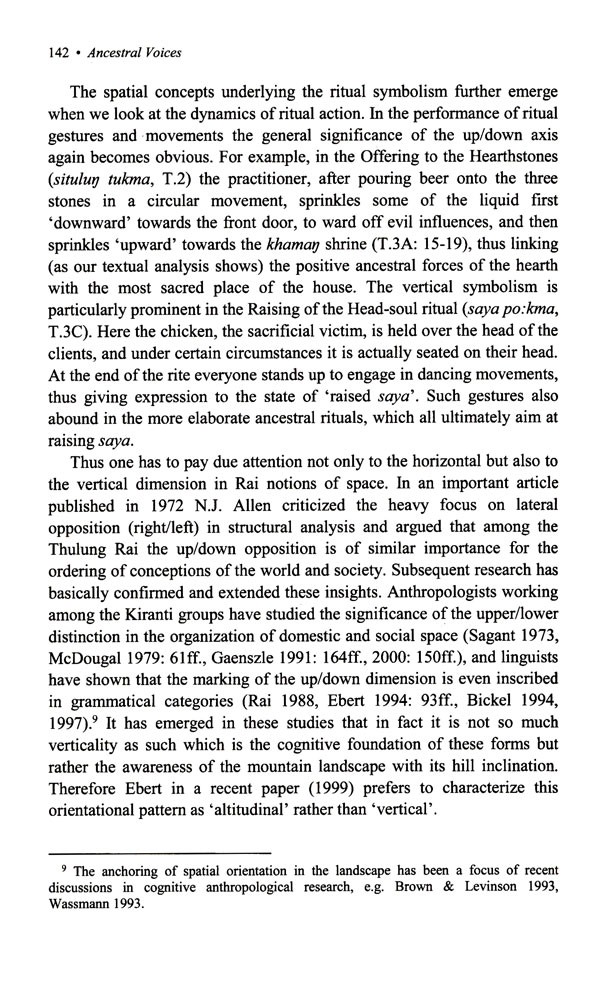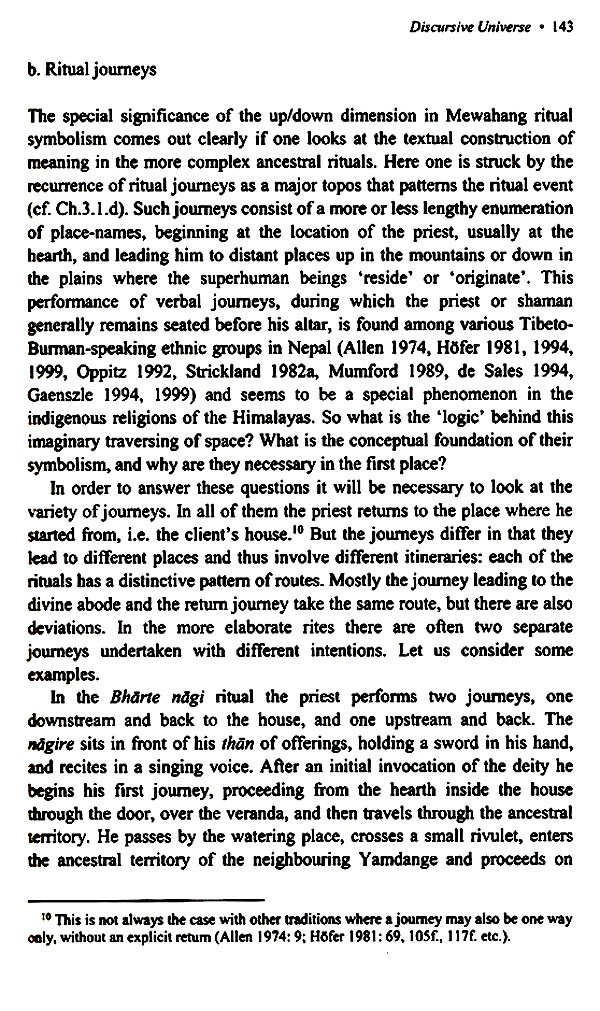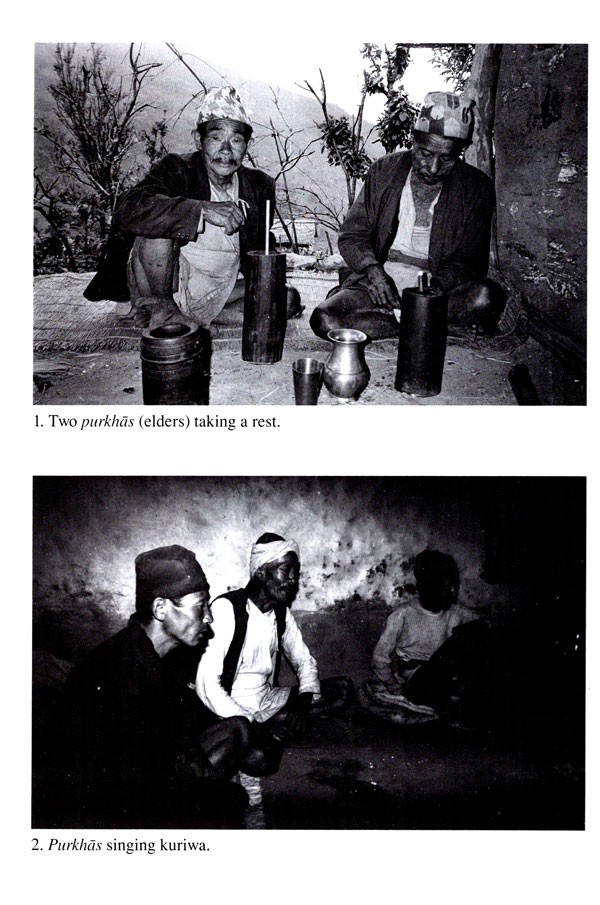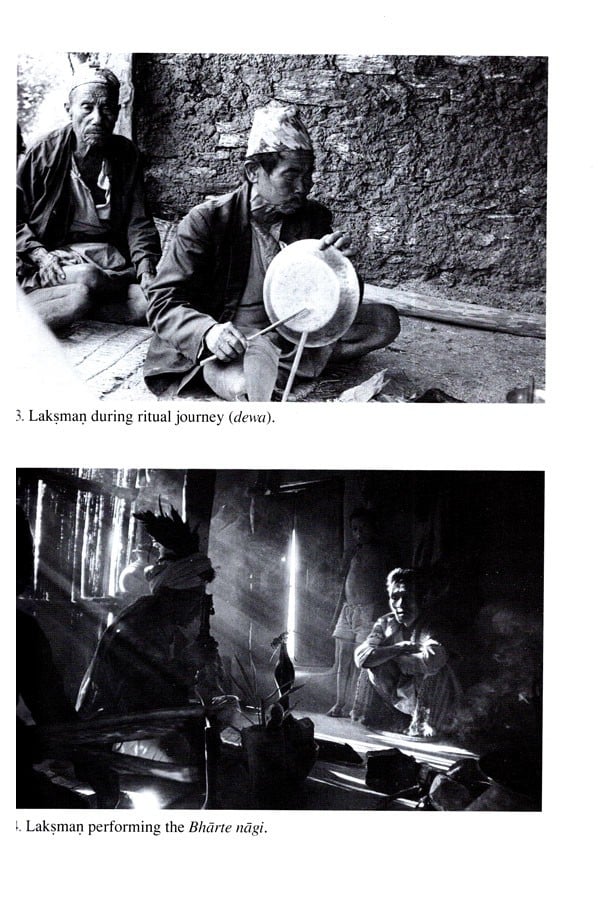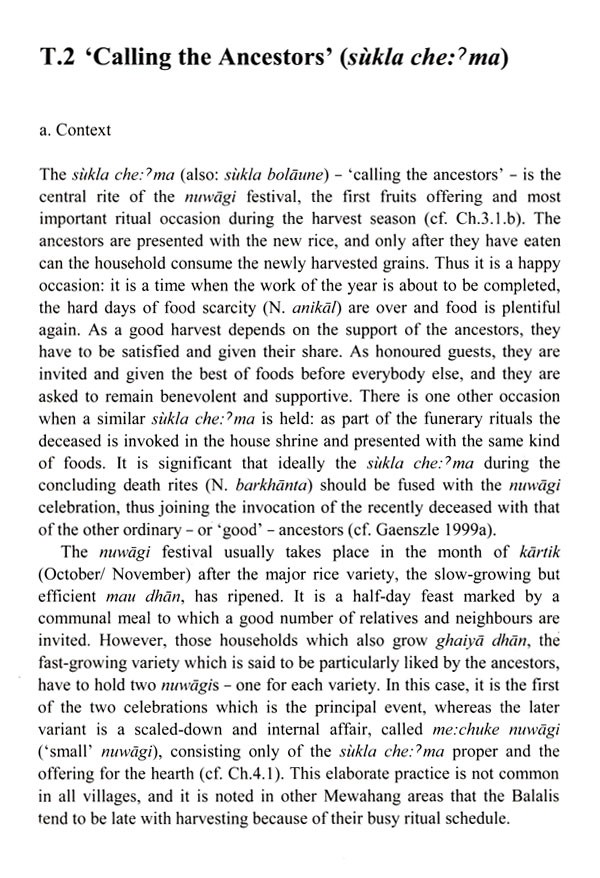
Ancestral Voices (Oral Ritual Texts and Their Social Contexts Among the Mewahang Rai of East Nepal)
Book Specification
| Item Code: | NBZ325 |
| Author: | Martin Gaenszle |
| Publisher: | Himal Books, Nepal |
| Language: | English |
| Edition: | 2021 |
| ISBN: | 9789937597586 |
| Pages: | 418 (13 B/W Illustrations) |
| Cover: | PAPERBACK |
| Other Details | 9.00 X 6.05 inch |
| Weight | 540 gm |
Book Description
This book looks at various genres of ritual speech among the Mewahang Rai, all of which make use of a distinct ritual language, in order to situate the oral ritual texts in their ethnographic context. Combining the textual with a cultural approach, the author discusses the indigenous concept of tradition, the rhetorical and poetic features of ritual speech genres, and the discursive universe constructed through the texts. At the theoretical level, the book contributes to debates about ritualization and performance and to discussions in linguistic anthropology concerning the notions of formality, indexicality, entextualization and contextualization.
Martin Gaenszle is Professor of the Cultural and Intellectual History of Modern South Asia at the Department of South Asian, Tibetan and Buddhist Studies, University of Vienna.
Gerard Toffin
This book which I have the pleasure to introduce was originally published in Germany in 2002, nearly 20 years ago, under the same title as the present one. It is the result of first-hand, long-term research which started in the mid-1980s and early 1990s, and is still under way among the Mewahang, a Rai sub-group numbering about 4,000 persons who live in eastern Nepal (upper Arun Valley). Martin Gaenszle, Professor at the University of Vienna, is a widely recognized and influential expert on this ethnic group. He has learnt the local language and has already written a book (Mandala Book Point, 2000) as well as several articles about this community. His research spans a period of nearly 40 years. Over time he has accumulated a huge number of documents and observations, forever deepening and extending his scope. This work therefore provides solid ground for examining indigenous religious matters and the oral ritual texts used by local people.
Ancestral Voices, in the author's own words, 'explores the properties of the oral tradition as well as its role in Mewahang social life' (p. 2). The Rai give the name muddum (sometimes pronounced mukdum) to the corpus of beliefs, rituals and oral ritual texts which constitutes their oral tradition. For the Mewahang, this word is synonymous with 'lifestyle' and 'custom'. The concept intricately combines social and religious issues; the boundaries between the two realms seem to be ever-shifting and almost impossible to demarcate. Remarkably, anthropomorphic deities, as in Hinduism and Buddhism, are virtually absent from these oral recitations. Supernatural beings mostly take the form of ancestors. Ancestrality, in fact, constitutes the backbone of the religion. This living tradition keeps alive the memory of ancestors' deeds. It condenses the knowledge that originated from these initiators and was handed down orally from one generation to the next. What's more, muddum is the basis of Mewahang cultural identity: it sustains the social bonds within the ethnic community. It upholds the specificity of the group and has succeeded over time in resisting the influence of Hinduism channelled by Hindu castes after the unification of Nepal. The memory of the group depends on muddum.
On my very first visit to the Mewahang Rai (Mewahay Rai) in East Nepal I witnessed the kind of ritual from which the passage above is taken. It was during the festive autumn season when the newly harvested grains were presented as first fruits offerings to the ancestors. Large quantities of cooked new rice and other foods, meat, vegetable, beer etc., were laid out below the house-shrine for the dead kin. Suddenly the room was filled with a high-pitched 'ringing' of the numerous voices of household members and elders who all spoke elatedly and with equal intensity. The unique sound of this seemed at first chaotic, as the voices were not in synchronic harmony but were rather a cacophonic jumble. However at the same time one was left with the overall impression of a uniform sonority, on a different level, 'above' the individual voices. At this time I did not understand a word of what was said, nor much of what was happening. Yet I was moved by this strange experience of a different dimension: I could almost feel a kind of 'ancestral presence'.
This seemed to confirm the anthropologist's notion of ritual as being something 'set apart' in the realm of the 'sacred'. However, for the Rai this action was something less extraordinary. When I asked what had happened, I was told: 'We simply presented food to the ancestors. We told them to come, to eat and to return. Nothing more.' Though this is somewhat understating the matter, it brings out the truth that the rituals of the Mewahang Rai basically consist of speech acts, and that these speech acts do not differ in a fundamental way from those in ordinary life. But there are qualitative differences. The most important one is that speaking to the ancestors requires the use of a special ritual language, or idiom, which is — in some cases more, in some cases less - distinct from the ordinary language. In the lines above, for example, most of the words are also used in ordinary speech, but there are some expressions used only in ritual, like touba-di: capma-di: (`bamboo-container-beer calabash-beer'). So one crucial question discussed in this book is: What distinguishes ritual speech from ordinary speech?
**Contents and Sample Pages**
